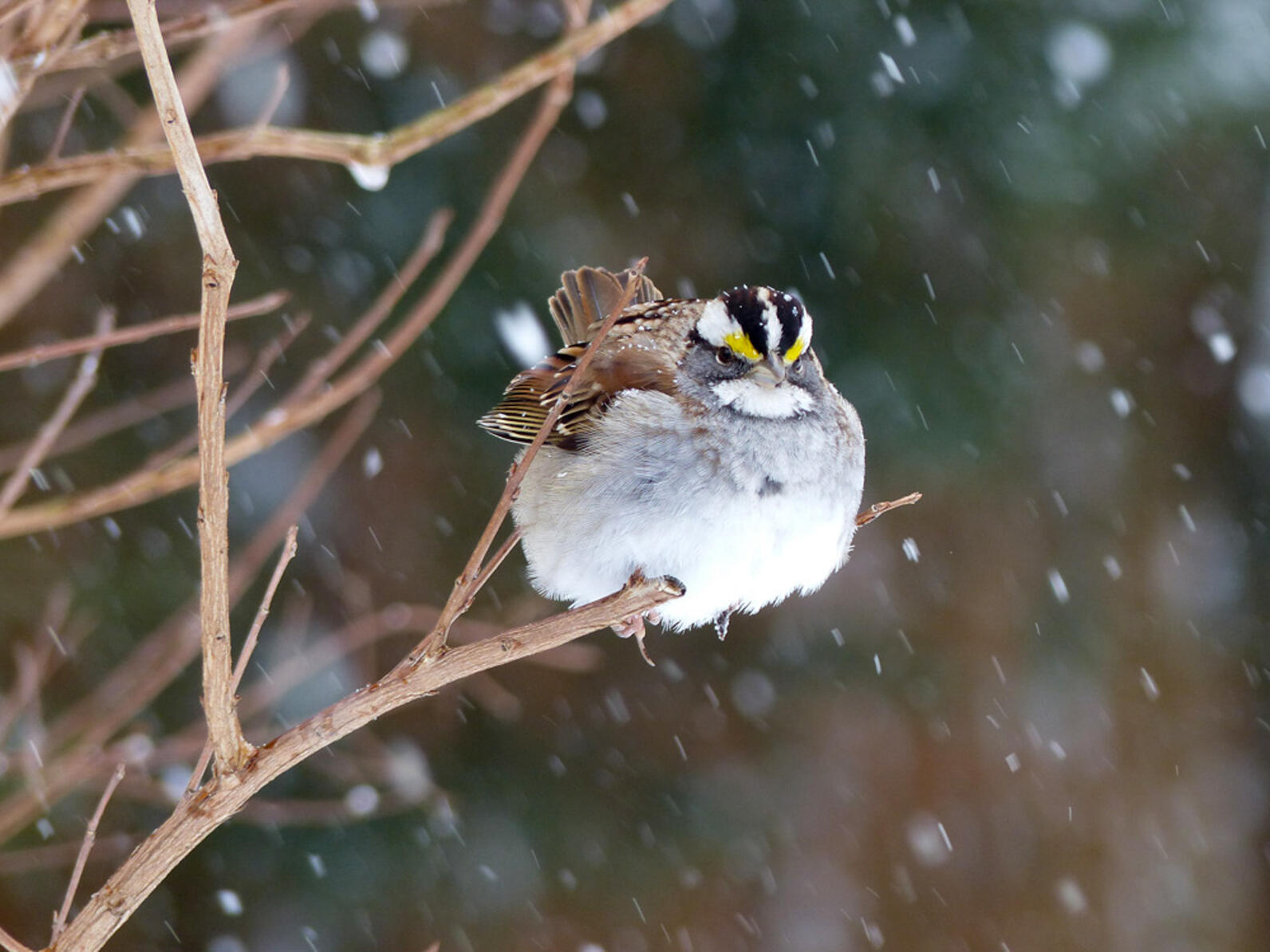While it’s common for forest management activities to be carried out year round, seasons are an important consideration when working with birds.
In the summer, for example, you’ll easily notice if your forest is well-shaded by a large mature canopy, resulting in bare ground underneath. In this scenario, birds that need shrubs and small trees growing on the forest floor, like Ruffed Grouse and Black-throated Blue Warbler, may be absent.
In order to reintroduce these species on your land, it’s necessary to alter the habitat by removing some mature trees to encourage growth on the forest floor. Doing so will also increase vigor in the remaining trees by allowing them more light and space.
However, the spring and summer breeding season is not an ideal time to conduct this management - which might disturb birds’ ability to nest and raise chicks. Instead, plan your harvest in winter!

Help Keep Disturbance at a Minimum
The first, and most obvious reason, to avoid cutting trees in your woods during the spring and summer months is to not disturb breeding birds, many of which are migratory species. These birds have traveled a long way and have a small window from May through late July to successfully nest and rear offspring before heading south. Limiting disturbance is an easy action you can take to give the birds on your property their best shot at nesting successfully.
Of course, migratory breeding birds aren’t the only ones to benefit from winter management -- the habitat created will also help wintering species, too, like Dark-eyed Juncos and White-throated Sparrows.
Snow and Ice Creates an Easier Pathway
Traditionally this is a time when loggers and foresters are in the field harvesting the timber that was marked to cut during the summer. The primary reason being that a good layer of snow and ice will prevent the soil from compacting after many passes from large machinery like a skidder or forwarder, which moves logs through the forest to the landing. Compacted soils can negatively affect the growth of your standing timber and the regeneration of new trees by limiting oxygen to the roots and causing rainwater to run off its hard surface instead of feeding the trees.
Frozen Water Helps Mitigate Runoff
Operating around frozen water also mitigates the threat of mud and clay runoff into nearby waterways, which could harm local fish and other aquatic life. This is especially important around vernal pools, which are a unique wetland habitat that develop in the depressions of a forests topography. These ephemeral pools play a critical ecological role by providing a site for many species of amphibians to lay their eggs and develop into adult salamanders, frogs, newts, and invertebrates – important food sources for birds like Herons and Red-shouldered hawks.
Low Ground Cover Stays Protected
With ample snow, sensitive and rare plants, along with low ground cover like grasses, ferns and small shrubs are also more protected from harvesting activity so that in the spring that greenery is still present for birds that forage and nest on the forest floor. Some tree species, like aspen, which sprouts new growth from its own roots, can be targeted to cut during the winter so that a thicket of new saplings will proliferate in the spring and summer. This can be planned to develop habitat for American Woodcock who seek out low aspen cover during the breeding season. Managing for woodcock feeding grounds is almost exclusively possible during the winter months when the ground is frozen as not to disturb the moist, rich soils where they forage for earthworms.
Your Wood Stays High Quality for Longer
Winter is also a friend to maintaining the quality of your wood from the stump to the mill. Felling trees into soft pillow-y snow is a much better landing spot than the exposed rocks and uneven terrain that the spring and summer afford. In addition, the colder temperatures slow the natural process of decay that starts once the wood is removed from the stump and laid in the landing. Both of these advantages will provide a better return for your investment into your property.
Think Ahead and Work With a Professional
Planning to make changes to your forest’s structure and composition requires a thorough forest inventory and careful planning for the long-term health and longevity through management activities. We highly recommend working with forest professionals who can provide these services to you and help you meet your goals for your land. When discussing management with a forestry professional, be sure to request delaying harvests through the breeding season in favor of the winter months. In doing so you’ll help the forest breeding birds nest, rear their young successfully, and create quality habitat for them to return to year after year.
If you are a landowner or manager interested in improving habitat for birds and other wildlife, check out the Healthy Forest Resources. Land owners in or near Priority Forest Areas can fill out our Landowner Assistance Form, and we'll do our best to be in touch in 2-3 weeks.




